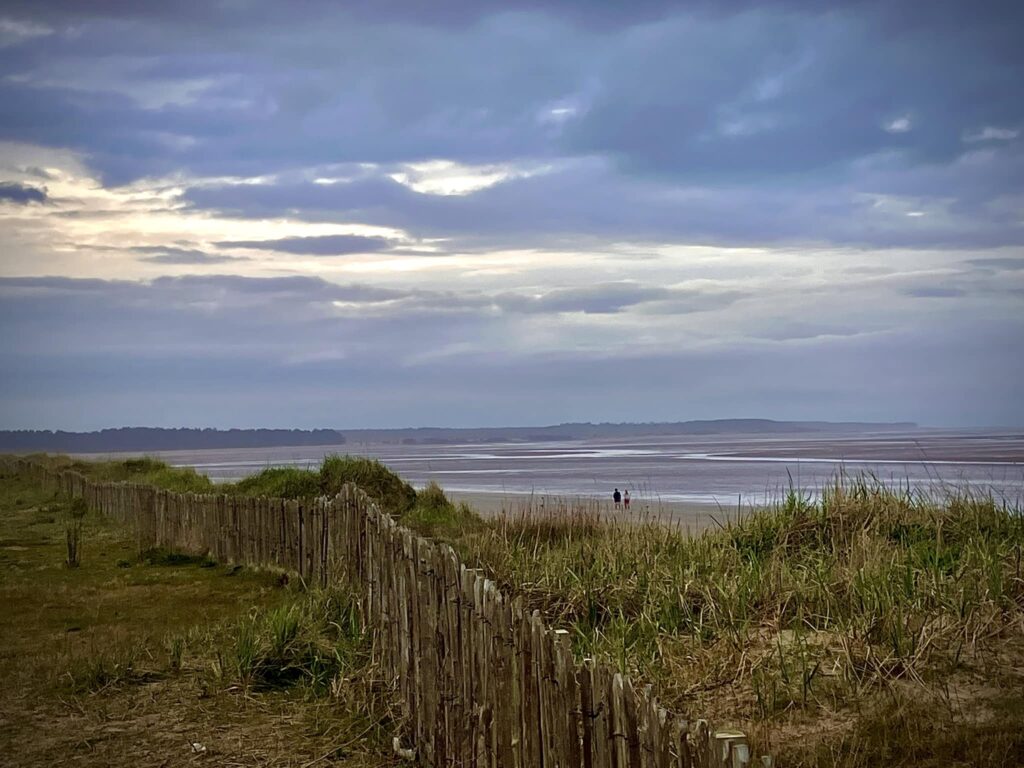Elizabeth Peddie Steele Hutton MA (c.1867-1917)

While wandering along the West Sands or over the Links at the turn of the twentieth century, a walker may have come across a student of history and, latterly, divinity gazing out towards the St Andrews skyline. This student was Elizabeth Peddie Steele Hutton, and she would later write about what she calls the ‘charm of St. Andrews’: ‘You think the town a “grey city”’, she wrote, ‘and suddenly a day comes when the shore vibrates with colour waves – blue sky, clear green water, and red-white sand – and the aged stones are warm with light.’[1] Steele Hutton was one of the first two women to graduate with a history MA (Honours) degree from the University of St Andrews, and she received her first-class history degree in 1903 following more than a decade of study in the Auld Grey Toon. She had entered higher education in 1892 as a student within the United College, and here she studied a wide variety of subjects, including mathematics, logic, history, English literature, Latin and natural philosophy. Steele Hutton won the 1900-1901 Rector’s Prize, which was worth £30, for an essay entitled ‘The Duty of the Individual to the State’, and she was also the first female editor of College Echoes, a University of St Andrews student-run publication. In addition to her history studies, she was a divinity student within St Mary’s College from 1901 to 1904; clearly, Steele Hutton was in St Andrews to look at more than just the scenery.
Born in Liverpool c.1867, Steele Hutton was the daughter of Eliza Peddie Steele and her husband, David Hutton, both of whom are remembered on a monument within Edinburgh’s Grange Cemetery. Eliza Peddie Steele belonged to a family with strong academic credentials; her father, Peter Steele (1794-1871), had been a schoolmaster in Dalkeith, and later a classics lecturer at the Free Church training college in Edinburgh during the 1850s. Her brother James (1836-1917) was a medical doctor and a classical scholar who spent most of his later life in Rome and Florence, while her sister Anne married a classics teacher and lived in St Andrews. Indeed, Eliza Peddie Steele had been resident in St Andrews since 1881.
When Elizabeth Peddie Steele Hutton began her studies at the University of St Andrews, then, Steele Hutton was already a resident of St Andrews. A 1917 edition of College Echoes published an obituary for Steele Hutton, its former editor, which revealed that she had ‘exercised a unique influence on the student life of her time.’[2] According to the obituary’s author, ‘Students of that time think of her chiefly in connection with the Town Students’ Association’, and that this organisation was ‘in a sense her own creation, since it was a suggestion of hers that led to its foundation, and its success was in great measure due to her initiative and fertility of suggestion.’[3] In her 1987 PhD thesis, Sheila Hamilton explained that the Town Students’ Association was established in 1894 as the numbers of local female students and those who commuted were growing, and the body ‘served to act as a focal point of the apparent division’ felt between the female students who lived in University Hall and those who lived outwith this hall of residence.[4] ‘The Logic class-room’, Hamilton revealed, ‘was used for ordinary meetings and socials were held in the Hebdomadar’s Room.’[5]
The College Echoes obituary tells us that Steele Hutton died ‘suddenly in London’ on 5 January 1917.[6] The authortells us that Steele Hutton had also ‘assisted in the work of the History Department’ following her graduation, and that ‘she had decided to devote herself to historical research’.[7] Upon leaving St Andrews in 1904, she entered the London School of Economics (LSE) to study Palaeography. While here, she edited the Clare Market Review, LSE’s student-run magazine, from 1905 to 1908, which College Echoes described as ‘a more serious and ambitious production than the usual type of college magazine.’[8] The College Echoes obituary also reveals that Steele-Hutton’s historical research continued after she had left LSE and that
Her journeyings in search of local records were to her delightful voyages of exploration, in the course of which she was always increasing the number of her friends as well as adding to her knowledge of the past. Only a few weeks ago she was writing enthusiastically of the discoveries she was making in the Althorp MMS […] For those who remember the joy she always took in her work, it is good to know that that joy was hers to the end.[9]
In the years following her graduation from the University of St Andrews, Steele Hutton penned a short essay, what might even be described as a love letter, to St Andrews, its landscape and its university. Entitled ‘The Romance of St. Andrews’, this essay was included in Votiva Tabella: A Memorial Volume of St Andrews University in Connection with its Quincentenary Festival 1411-1911, a volume printed in 1911 by Glasgow publisher Robert Maclehose and Company Limited. Other contributions included anthropologist and folklorist Andrew Lang’s poem about St Andrews, ‘Almae Matres’, and a short story by the writer J.M. Barrie, which was entitled ‘A Word about Donkeys’.[10] Writing in her pantheistic ‘Romance’, Steele Hutton remembered a St Andrews sunset which was ‘the faintest rose-pink’, ‘mingle[d] with the softest of blues’, and that ‘The air was full of light, and the whole landscape seemed as though carved out of an amethyst.’[11] Steele Hutton also recalled that the Auld Grey Toon’s chilly days, when the town was enveloped by mist, were just as beautiful as when pink sunsets served as backdrops to both townscape and seascape.
Memories of St Andrews, its university and its land and its skies, then, never left Elizabeth Peddie Steele Hutton. Eight years after her graduation, she revealed in ‘The Romance of St. Andrews’ that the draw of the town’s landscape was just as compelling as her studies during her time as a student. According to her, and many others, from Lang to the poet R.F. Murray, there was something undeniably magical about St Andrews; ‘Murray was in love with the place,’ wrote Lang in an essay entitled ‘Religio Loci’, ‘most of us are.’[12] Indeed, Steele Hutton ends her ‘Romance of St. Andrews’ with a student ‘striding home through the chilly haar, […] scarlet gown pulled closely round’, and, ‘even through the mist that hides material things,’ the student sees around St Andrews ‘the ghosts of a great past, the immanence of a happy present, the shadow of a noble future.’[13]

- For her University career, see her entry in the Biographical Register ↩︎
- This family history is outlined in the account of her father’s grave; and also in an obituary of her brother. ↩︎
By Sarah Leith. Sarah is an historian of environmental thought, literature and culture in twentieth-century Scotland and she is currently a Research Assistant for the Women Historians of St Andrews project.
[1] E.P. Steele-Hutton, ‘The Romance of St. Andrews’ in Votiva Tabella: A Memorial Volume of St Andrews University in Connection with its Quincentenary Festival 1411-1911 (Glasgow, 1911), pp.329-335, at pp.330, 334-5.
[2] ‘Miss E.P. Steele Hutton, M.A’, College Echoes (1917), p.19.
[3] Ibid.
[4] Sheila Hamilton, ‘Women and the Scottish Universities circa 1869-1939: A social history’, (Unpublished PhD thesis, The University of Edinburgh, 1987) pp.156-7.
[5] Ibid., p157
[6] ‘Miss E.P. Steele Hutton, M.A’, College Echoes (1917), p.19.
[7] Ibid.
[8] Ibid.
[9] Ibid.
[10] Andrew Lang, ‘Almae Matres’ in Votiva Tabella: A Memorial Volume of St Andrews University in Connection with its Quincentenary Festival 1411-1911 (Glasgow, 1911), pp.417-418; James Matthew Barrie, ‘A Word about Donkeys’ in Votiva Tabella: A Memorial Volume of St Andrews University in Connection with its Quincentenary Festival 1411-1911 (Glasgow, 1911), pp.389-98.
[11] E.P. Steele-Hutton, ‘The Romance of St. Andrews’ in Votiva Tabella: A Memorial Volume of St Andrews University in Connection with its Quincentenary Festival 1411-1911 (Glasgow, 1911), pp.329-335, at p.329.
[12] Andrew Lang, ‘Religio Loci’ in Votiva Tabella: A Memorial Volume of St Andrews University in Connection with its Quincentenary Festival 1411-1911 (Glasgow, 1911), pp.401-413, at pp.402-3.
[13] Steele-Hutton, ‘The Romance of St. Andrews’, p.335.
